-
 Bitcoin
Bitcoin $106,754.6083
1.33% -
 Ethereum
Ethereum $2,625.8249
3.80% -
 Tether USDt
Tether USDt $1.0001
-0.03% -
 XRP
XRP $2.1891
1.67% -
 BNB
BNB $654.5220
0.66% -
 Solana
Solana $156.9428
7.28% -
 USDC
USDC $0.9998
0.00% -
 Dogecoin
Dogecoin $0.1780
1.14% -
 TRON
TRON $0.2706
-0.16% -
 Cardano
Cardano $0.6470
2.77% -
 Hyperliquid
Hyperliquid $44.6467
10.24% -
 Sui
Sui $3.1128
3.86% -
 Bitcoin Cash
Bitcoin Cash $455.7646
3.00% -
 Chainlink
Chainlink $13.6858
4.08% -
 UNUS SED LEO
UNUS SED LEO $9.2682
0.21% -
 Avalanche
Avalanche $19.7433
3.79% -
 Stellar
Stellar $0.2616
1.64% -
 Toncoin
Toncoin $3.0222
2.19% -
 Shiba Inu
Shiba Inu $0.0...01220
1.49% -
 Hedera
Hedera $0.1580
2.75% -
 Litecoin
Litecoin $87.4964
2.29% -
 Polkadot
Polkadot $3.8958
3.05% -
 Ethena USDe
Ethena USDe $1.0000
-0.04% -
 Monero
Monero $317.2263
0.26% -
 Bitget Token
Bitget Token $4.5985
1.68% -
 Dai
Dai $0.9999
0.00% -
 Pepe
Pepe $0.0...01140
2.44% -
 Uniswap
Uniswap $7.6065
5.29% -
 Pi
Pi $0.6042
-2.00% -
 Aave
Aave $289.6343
6.02%
Does the flattening of ADX in DMI mean that the trend is suspended?
A flattening ADX line suggests weakening trend strength, indicating possible consolidation or market indecision, but not necessarily a reversal.
Jun 16, 2025 at 02:07 pm
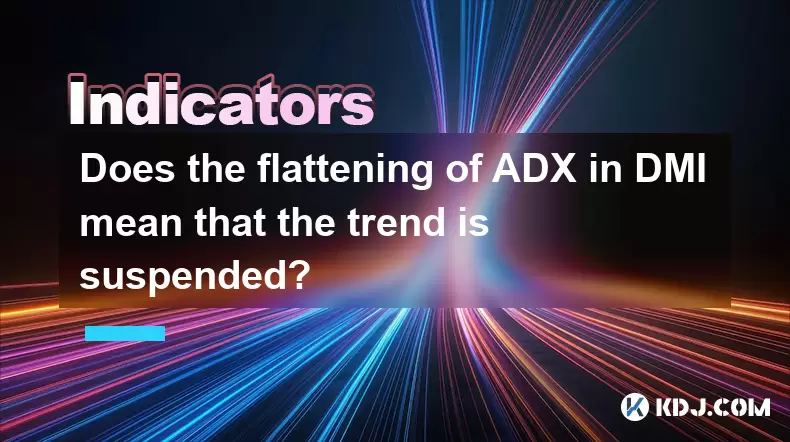
Understanding the ADX and DMI Indicators
The ADX (Average Directional Index) is part of the DMI (Directional Movement Index) system developed by J. Welles Wilder to measure trend strength. The DMI itself consists of three components: the +DI (Positive Directional Indicator), -DI (Negative Directional Indicator), and the ADX line. While the +DI and -DI help determine the direction of the trend, the ADX measures the strength of that trend, regardless of its direction.
When analyzing price movements in cryptocurrencies, traders often rely on these indicators to gauge whether a market is trending or ranging. A rising ADX above 25 typically indicates a strong trend, while an ADX below 20 suggests a weak or non-existent trend. However, when the ADX flattens, it raises a key question: does this mean the trend is suspended?
The ADX line reflects the strength of the trend, not its direction.
What Does a Flattening ADX Line Mean?
A flattening ADX line means that the rate of change in trend strength is decreasing. This doesn't necessarily imply that the trend has reversed or stopped entirely but rather that the momentum behind the current trend is weakening. In cryptocurrency markets, where volatility can shift rapidly, a flattened ADX may signal uncertainty among traders.
This phase could be interpreted as a consolidation period, where neither buyers nor sellers are gaining control. During such times, price action might become choppy, and volume could decline. Traders should monitor how long the ADX remains flat before drawing conclusions about the trend's continuation or reversal.
- Flattening ADX suggests diminishing trend strength.
- It may indicate a market pause or consolidation.
- Doesn’t confirm trend reversal, only reduction in directional strength.
How to Interpret ADX Flattening Alongside DI Crossovers
To get a clearer picture, traders should look at the relationship between the +DI and -DI lines alongside the ADX. When the +DI crosses above -DI, it signals potential bullish momentum, and vice versa for bearish momentum. However, if the ADX is flattening during such crossovers, it may suggest that the new trend lacks conviction.
For example, in crypto trading pairs like BTC/USDT or ETH/USDT, a situation where +DI crosses above -DI but ADX remains flat might result in a false breakout. Therefore, traders should wait for the ADX to rise again above 25 after such a crossover to confirm the emergence of a new trend.
- Monitor both DI crossovers and ADX behavior.
- A flat ADX during a DI crossover may indicate a weak trend initiation.
- Look for confirmation from other indicators like RSI or MACD.
Practical Steps to Confirm Trend Suspension Using ADX
Traders can take several steps to validate whether a flattening ADX truly indicates a suspended trend:
- Check if the ADX has been above 25 before flattening — this increases the likelihood of a prior strong trend.
- Analyze candlestick patterns to see if they reflect indecision, such as dojis or spinning tops.
- Observe volume levels — declining volume supports the idea of a stalled trend.
- Use additional tools like moving averages to identify potential support/resistance zones.
In the context of cryptocurrencies, which are prone to sharp reversals, confirming the trend suspension through multiple lenses is crucial before making trading decisions.
Common Misinterpretations of ADX Behavior
One of the most common mistakes traders make is interpreting the ADX as a directional indicator. Since the ADX only measures strength, not direction, assuming a rising or falling ADX equates to a bullish or bearish move is incorrect. Similarly, a flat ADX isn't always a sign of reversal; it could simply indicate a temporary lull before a trend resumes.
Another misunderstanding involves expecting the ADX to predict price movement. It cannot forecast future prices or directions. Its sole purpose is to evaluate how strongly a trend is currently being followed by the market.
- ADX does not indicate trend direction, only its strength.
- A flat ADX may precede a trend resumption, not just a reversal.
- Never use ADX in isolation; combine with directional indicators for better insights.
Frequently Asked Questions
Q: Can ADX be used effectively in sideways crypto markets?
A: Yes, but with caution. In sideways or range-bound crypto markets, the ADX usually stays below 20, indicating no clear trend. Traders should avoid trend-following strategies during such periods and consider using oscillators instead.
Q: Should I exit a trade if the ADX starts to flatten?
A: Not necessarily. If you're already in a trade and the ADX flattens, assess other factors such as support/resistance levels and volume. Exiting solely based on a flattening ADX may lead to premature exits.
Q: Is a rising ADX always a good sign for trend traders?
A: A rising ADX generally confirms increasing trend strength, but it should be combined with DI crossovers and price action analysis. Sometimes, a late rise in ADX occurs after a trend has matured, signaling possible exhaustion.
Q: How often should I check the ADX when monitoring a crypto position?
A: It depends on your trading timeframe. For day traders, checking every 15–30 minutes is appropriate. Swing traders can review the ADX daily or weekly, depending on their strategy.
Disclaimer:info@kdj.com
The information provided is not trading advice. kdj.com does not assume any responsibility for any investments made based on the information provided in this article. Cryptocurrencies are highly volatile and it is highly recommended that you invest with caution after thorough research!
If you believe that the content used on this website infringes your copyright, please contact us immediately (info@kdj.com) and we will delete it promptly.
- 2025-W Uncirculated American Gold Eagle and Dr. Vera Rubin Quarter Mark New Products
- 2025-06-13 06:25:13
- Ruvi AI (RVU) Leverages Blockchain and Artificial Intelligence to Disrupt Marketing, Entertainment, and Finance
- 2025-06-13 07:05:12
- H100 Group AB Raises 101 Million SEK (Approximately $10.6 Million) to Bolster Bitcoin Reserves
- 2025-06-13 06:25:13
- Galaxy Digital CEO Mike Novogratz Says Bitcoin Will Replace Gold and Go to $1,000,000
- 2025-06-13 06:45:13
- Trust Wallet Token (TWT) Price Drops 5.7% as RWA Integration Plans Ignite Excitement
- 2025-06-13 06:45:13
- Ethereum (ETH) Is in the Second Phase of a Three-Stage Market Cycle
- 2025-06-13 07:25:13
Related knowledge

How to confirm the effectiveness of the average price line support in the time-sharing chart?
Jun 17,2025 at 12:56am
Understanding the Time-Sharing Chart and Its RelevanceIn cryptocurrency trading, time-sharing charts play a crucial role in analyzing short-term price movements. These charts typically display price fluctuations over a specific period, often ranging from minutes to hours. Traders rely on them to make quick decisions based on real-time data. The average ...

What does it mean when the momentum indicator breaks above the zero axis?
Jun 17,2025 at 12:43am
Understanding the Momentum IndicatorThe momentum indicator is a technical analysis tool used to measure the speed or velocity of price movements in cryptocurrency markets. It helps traders identify potential trend reversals, overbought or oversold conditions, and confirms existing trends. The indicator typically oscillates around a zero line, with value...
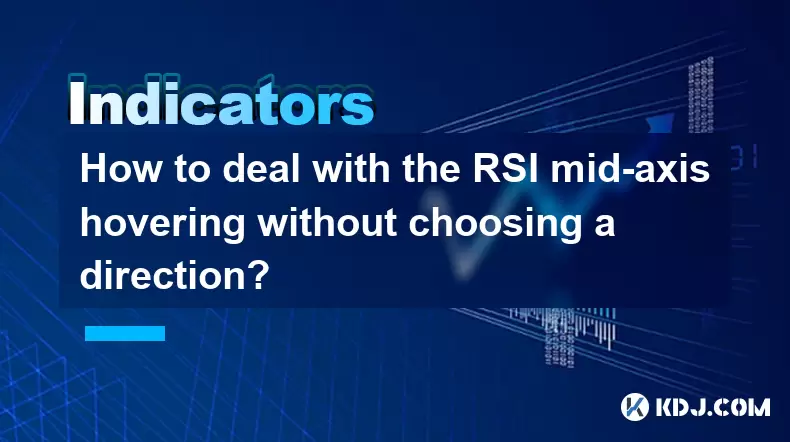
How to deal with the RSI mid-axis hovering without choosing a direction?
Jun 17,2025 at 02:02am
Understanding RSI Mid-Axis Hovering in Cryptocurrency TradingThe Relative Strength Index (RSI) is a popular momentum oscillator used by traders to assess whether an asset is overbought or oversold. In cryptocurrency markets, it's common for the RSI to hover around its mid-axis, typically at the 50 level, without showing a clear upward or downward trend....
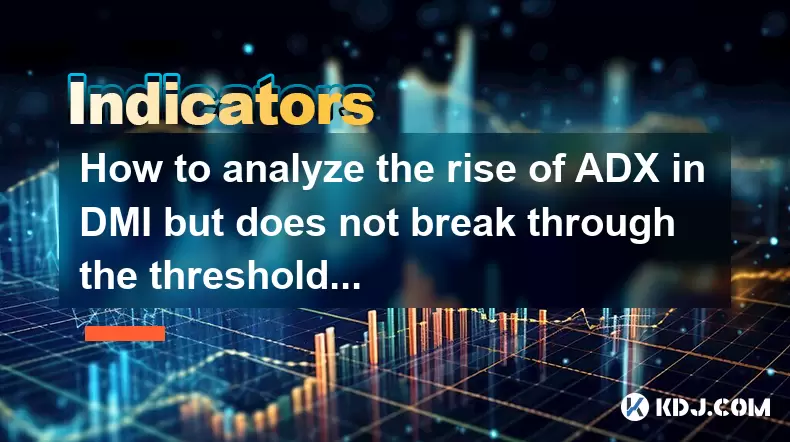
How to analyze the rise of ADX in DMI but does not break through the threshold?
Jun 16,2025 at 11:49pm
Understanding ADX and DMI in Cryptocurrency TradingIn cryptocurrency trading, ADX (Average Directional Index) is a technical indicator used to measure the strength of a trend. It works in conjunction with the DMI (Directional Movement Indicator), which includes two components: +DI (Positive Directional Indicator) and -DI (Negative Directional Indicator)...
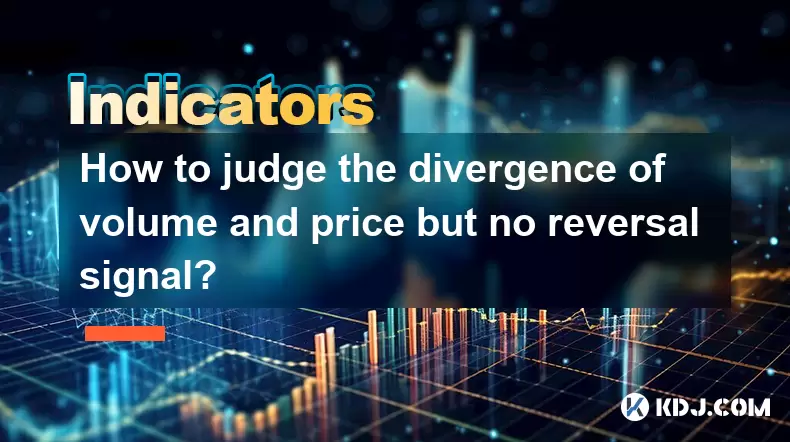
How to judge the divergence of volume and price but no reversal signal?
Jun 17,2025 at 12:28am
Understanding Volume and Price DivergenceIn the world of cryptocurrency trading, volume and price are two key indicators that traders monitor closely. Divergence occurs when these two metrics move in opposite directions. For example, if the price of a cryptocurrency is rising but its volume is declining, this could signal weakening momentum. However, it...
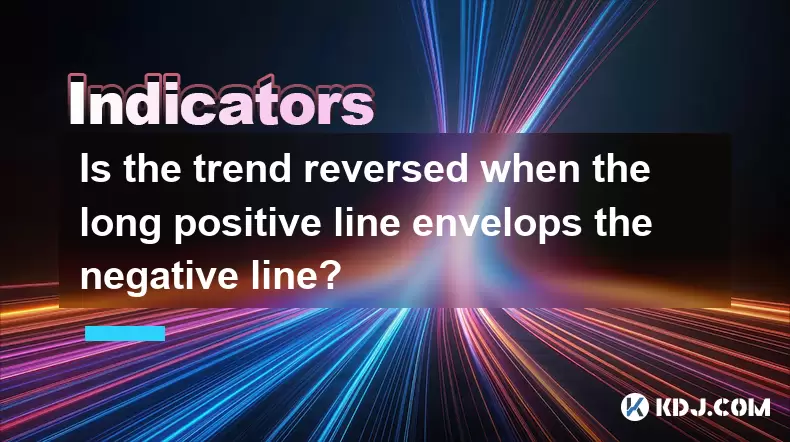
Is the trend reversed when the long positive line envelops the negative line?
Jun 17,2025 at 03:28am
Understanding the Envelope Pattern in Candlestick ChartsIn candlestick charting, one of the most widely recognized reversal patterns is the 'enveloping pattern.' This pattern typically appears at the end of a trend and signals a potential reversal. When a long positive (bullish) candle completely engulfs the previous negative (bearish) candle, it can in...

How to confirm the effectiveness of the average price line support in the time-sharing chart?
Jun 17,2025 at 12:56am
Understanding the Time-Sharing Chart and Its RelevanceIn cryptocurrency trading, time-sharing charts play a crucial role in analyzing short-term price movements. These charts typically display price fluctuations over a specific period, often ranging from minutes to hours. Traders rely on them to make quick decisions based on real-time data. The average ...

What does it mean when the momentum indicator breaks above the zero axis?
Jun 17,2025 at 12:43am
Understanding the Momentum IndicatorThe momentum indicator is a technical analysis tool used to measure the speed or velocity of price movements in cryptocurrency markets. It helps traders identify potential trend reversals, overbought or oversold conditions, and confirms existing trends. The indicator typically oscillates around a zero line, with value...

How to deal with the RSI mid-axis hovering without choosing a direction?
Jun 17,2025 at 02:02am
Understanding RSI Mid-Axis Hovering in Cryptocurrency TradingThe Relative Strength Index (RSI) is a popular momentum oscillator used by traders to assess whether an asset is overbought or oversold. In cryptocurrency markets, it's common for the RSI to hover around its mid-axis, typically at the 50 level, without showing a clear upward or downward trend....

How to analyze the rise of ADX in DMI but does not break through the threshold?
Jun 16,2025 at 11:49pm
Understanding ADX and DMI in Cryptocurrency TradingIn cryptocurrency trading, ADX (Average Directional Index) is a technical indicator used to measure the strength of a trend. It works in conjunction with the DMI (Directional Movement Indicator), which includes two components: +DI (Positive Directional Indicator) and -DI (Negative Directional Indicator)...

How to judge the divergence of volume and price but no reversal signal?
Jun 17,2025 at 12:28am
Understanding Volume and Price DivergenceIn the world of cryptocurrency trading, volume and price are two key indicators that traders monitor closely. Divergence occurs when these two metrics move in opposite directions. For example, if the price of a cryptocurrency is rising but its volume is declining, this could signal weakening momentum. However, it...

Is the trend reversed when the long positive line envelops the negative line?
Jun 17,2025 at 03:28am
Understanding the Envelope Pattern in Candlestick ChartsIn candlestick charting, one of the most widely recognized reversal patterns is the 'enveloping pattern.' This pattern typically appears at the end of a trend and signals a potential reversal. When a long positive (bullish) candle completely engulfs the previous negative (bearish) candle, it can in...
See all articles

























































































